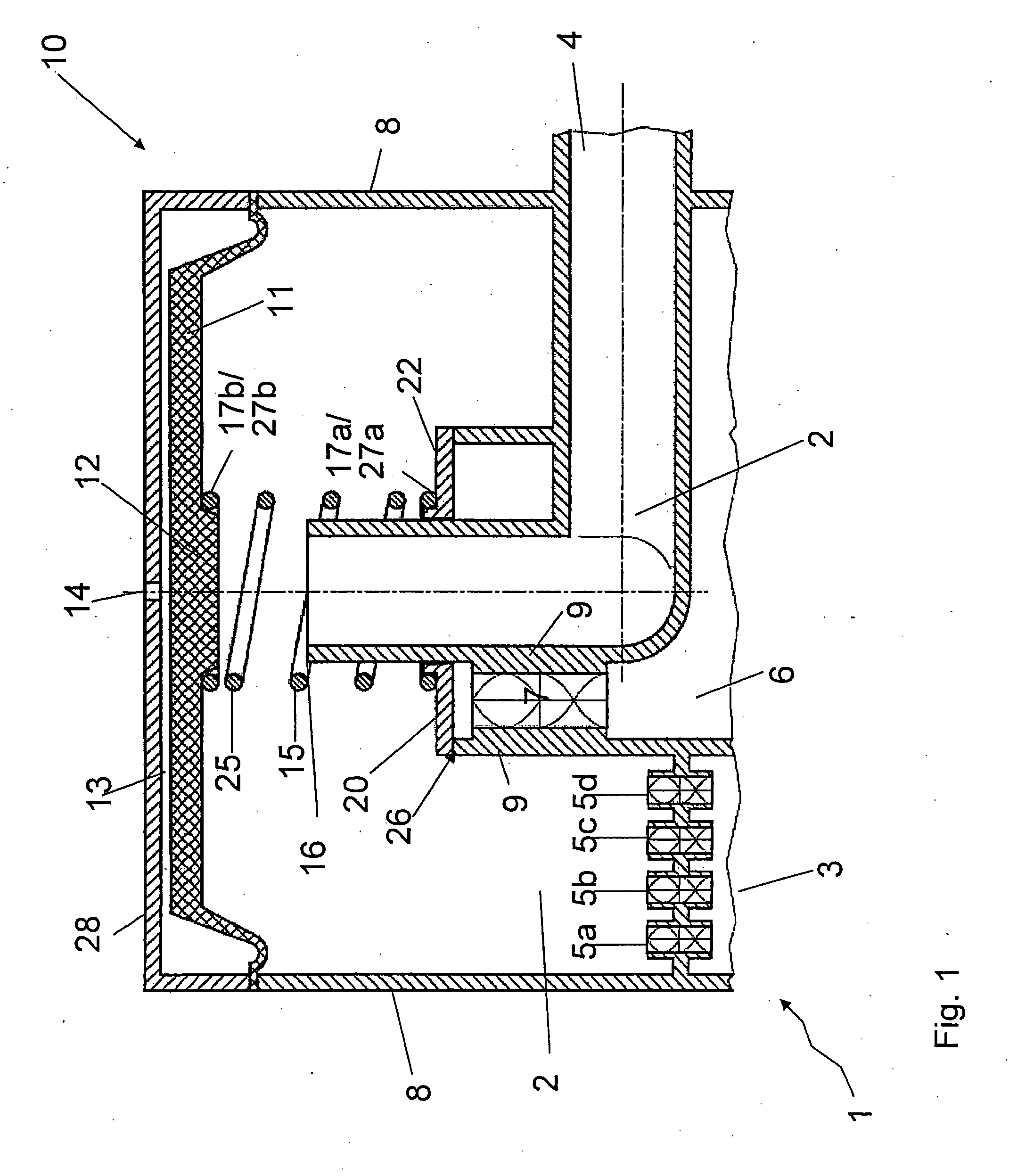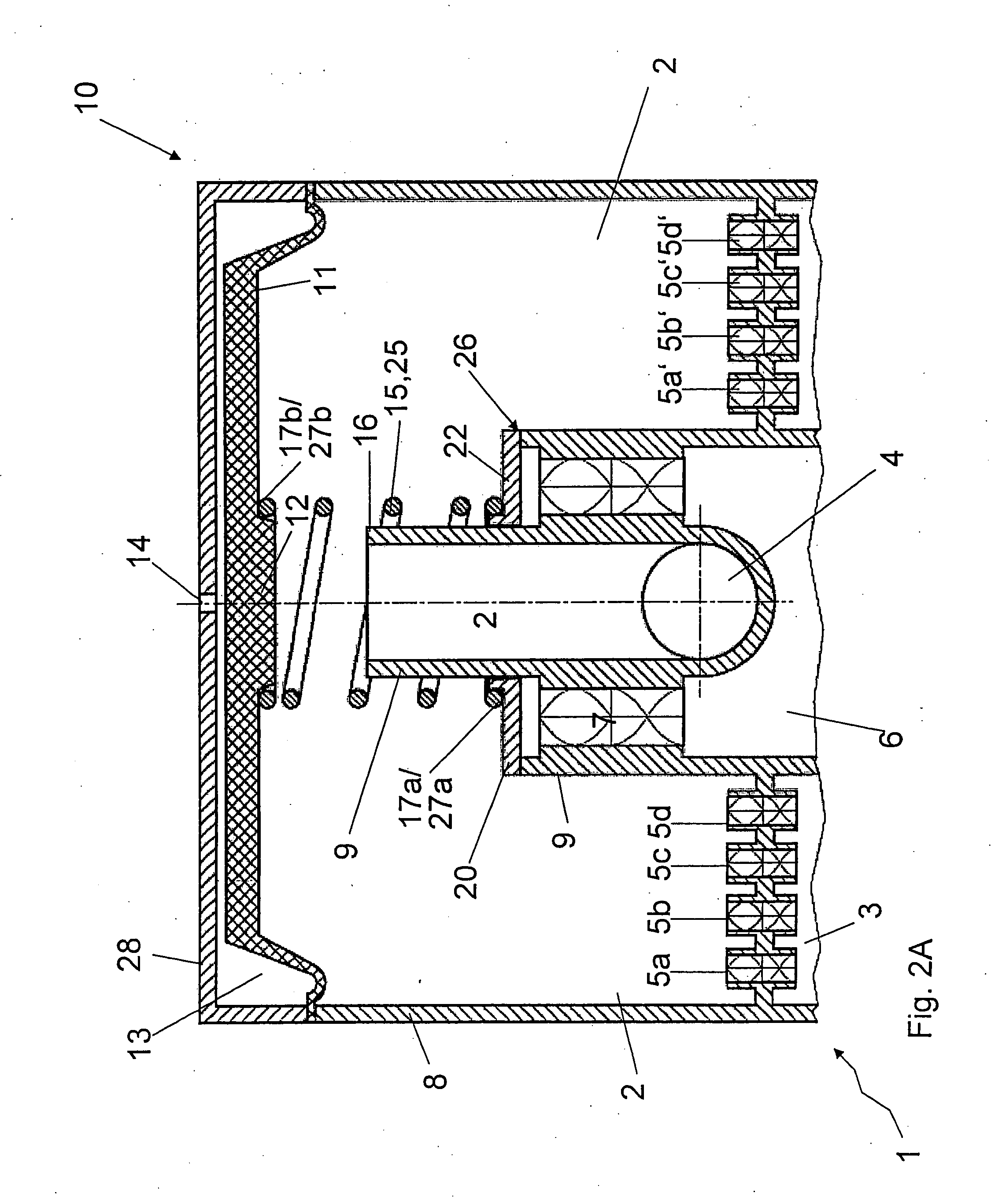Adaptive oil separator
a technology of oil separator and oil mist, which is applied in the direction of combustion engines, machines/engines, crankcase ventilation, etc., can solve the problems of unacceptable crankcase inflation, achieve a higher degree of separation, improve the protection of oil separator against failure, and improve control characteristics
- Summary
- Abstract
- Description
- Claims
- Application Information
AI Technical Summary
Benefits of technology
Problems solved by technology
Method used
Image
Examples
Embodiment Construction
[0026] It is to be understood that the invention may assume various alternative orientations and step sequences, except where expressly specified to the contrary. It is also to be understood that the specific devices and processes illustrated in the attached drawings, and described in the following specification are simply exemplary embodiments of the inventive concepts defined in the appended claims. Hence, specific dimensions, directions or other physical characteristics relating to the embodiments disclosed are not to be considered as limiting, unless the claims expressly state otherwise.
[0027]FIG. 1 shows an oil mist separator 1 claimed by the invention, which can be located in the ventilation line of an internal combustion engine between the crankcase and intake tract (blow-by line).
[0028] The oil mist separator 1 has a line 2, which can be part of the ventilation line of the internal combustion engine. This line 2 has an inlet 3 and an outlet 4. In the vicinity of the inlet ...
PUM
 Login to View More
Login to View More Abstract
Description
Claims
Application Information
 Login to View More
Login to View More - R&D
- Intellectual Property
- Life Sciences
- Materials
- Tech Scout
- Unparalleled Data Quality
- Higher Quality Content
- 60% Fewer Hallucinations
Browse by: Latest US Patents, China's latest patents, Technical Efficacy Thesaurus, Application Domain, Technology Topic, Popular Technical Reports.
© 2025 PatSnap. All rights reserved.Legal|Privacy policy|Modern Slavery Act Transparency Statement|Sitemap|About US| Contact US: help@patsnap.com



